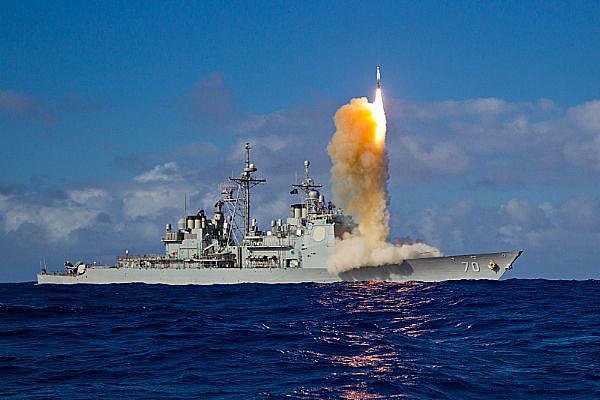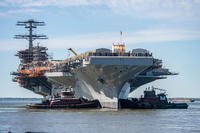Lawmakers overseeing the nation's sea service believe that the U.S. Navy's plans to pull half of its cruiser fleet out of commission for expensive upgrades will send these critical missile boats to an early grave.
Currently, the Navy has 22 missile cruisers that serve as key players in the air defense of the service's aircraft carrier groups. These cruisers provide ballistic missile defense but also serve as the command and control ship for larger, guided missile destroyers, Navy officials said.
Navy leaders, testifying Thursday before the House Armed Services Committee's Seapower and Projection Forces Subcommittee, told lawmakers that the service can extend the service life of 11 of its cruisers beyond 2035 through its proposed phased modernization plan.
Eleven cruisers would remain in service, deploying with the Navy's 11 carrier groups, and the remaining 11 would be placed into dry dock for critical hull, mechanical and electrical upgrades, Navy officials maintain.
Without the plan, all 22 cruisers would reach the end of their service life by the late 2020s, Navy leaders have said.
Lawmakers, however, are concerned that taking these ships out of service will place more stress on an already over-stretched Navy that struggles to maintain its global reach.
Rep. J. Randy Forbes, R-Virginia., said he worries that the plan will make these ships vulnerable to future budget cuts at a time when the Pentagon continues to struggle with how to deal with another round of sequestration cuts slated to come in 2016.
"Let me be clear, the term phased modernization that has been used by the Navy to describe this 10-year plan is a misleading one that asks Congress to agree to take half our cruiser fleet out of service with the hope that one day in the 2020s these ships will all be returned to our fleet," said Forbes, who serves as the chairman of the subcommittee.
The plan would begin in 2015 and would be made "affordable by drawing down manpower and operating costs during the extended modernization period, a cost avoidance of $4.7 billion," said Assistant Secretary of the Navy Sean Stackley.
The Navy would pull the 340 personnel off of each of the 11 cruisers that go into modernization, reducing the total manpower requirement by about 3,400, Stackley said.
When one cruiser retires and a modernized cruiser replaces it, the crew transfers to the new cruiser, so you "keep a steady, cruiser manpower in there," Stackley said.
"The savings per year associated with those manpower reduction ... is what helps to fund or fuel the cruiser modernization," he said.
Lawmakers view the plan as a risky gamble at a time when the Navy is set to play a key role in the Pentagon's new defense strategy to beef up its presence in the Pacific.
"I don't think this is a phased modernization plan; I think it's a phased euthanasia plan," Forbes said. "I think when those ships go into dry dock, we have no guarantee that they are ever going to be coming back."
Navy leaders defended the plan, arguing that it will give carrier groups the increased command and control capability over its guided missile destroyers beyond 2035, since more experienced leaders typically command cruisers.
"Without this phased modernization plan, we will be unable to ensure that our fleet possesses an air-defense commander capability through the decade of the 2030s," Stackley said.
Rep. K. Michael Conaway, R-Texas, wanted to know what the risk would be of drawing down those crews if the Navy needed to bring them back into service to deal with a major war.
Navy leaders said it would take up to two years to train up a new crew for unforeseen contingency operations.
Forbes was quick to criticize this weakness in the plan.
"Every one of these operational plans we have, when we look at the ships we need, none of them give us two years to go pull these ships out of dry dock and get them manned up to do it," he said.
Navy leaders maintain that this is a problem that the service cannot wait any longer to address.
"The reality is that the Navy will be unable to recapitalize this critical capability throughout the period of construction of the Ohio replacement submarine" and other modernization efforts, Stackley said. "We are identifying this problem years in advance so we collectively have the opportunity to work on it."
-- Matthew Cox can be reached at Matthew.Cox@monster.com.


























